We're excited to share this piece from Colleen Megerle, a supporter of Circlewood and the research assistant for Circlewood's Earthkeepers podcast.
The act of creation - whether it’s painting, writing, taking photos, editing videos, or making friendship bracelets for your Taylor Swift concert - is something that I have always viewed as essential to the human experience. Much like our interactions with God, nature, and each other, art has the power to shape us. I would argue that the act of creation is intrinsically intertwined with earthcare in that both call us to connect deeply with the world around us and be conscious of the footprints we leave behind us.
The art world has become increasingly eco-conscious in recent years, creating more and more exhibitions and pieces focused on the environment (check out some cool exhibitions here, or these examples from Louise Conner's column, The Art of Creation). Of course, this begs the question: how can we create art in a way that allows us to be the best possible stewards of the earth? Fortunately, there are plenty of resources out there to help you make informed decisions about the way you purchase and use art supplies.
The Beauty of Using What You Have
First and foremost, one of the most sustainable things you can do in nearly any scenario is to simply use what you have. Maybe it’s the hoarding tendencies of my parents showing, but I’m always hesitant to throw out things that could be used in another project, and I’d like to think it’s not only saved me money but also minimized the amount of waste I produce! Some of my personal favorite ways to reuse include:
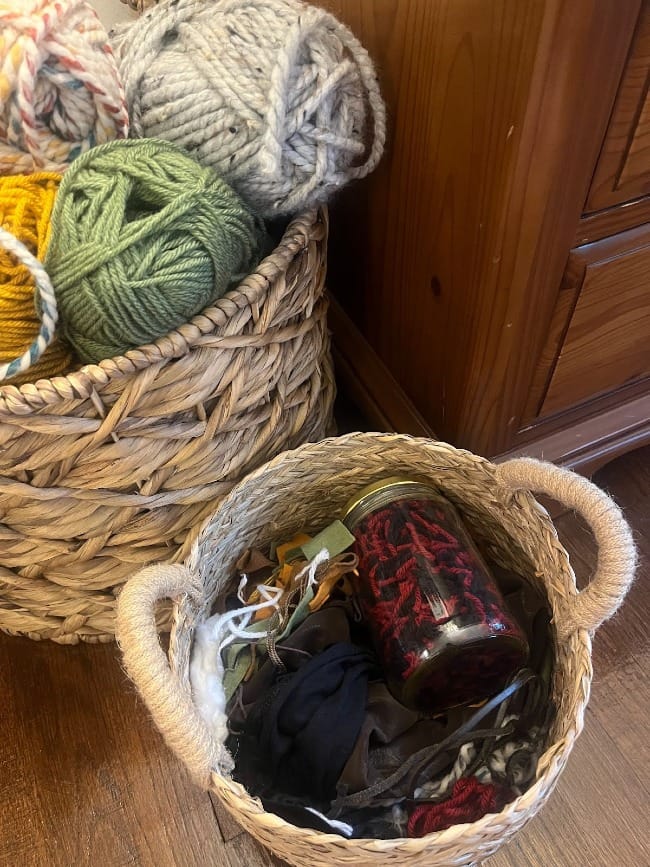
- Using small yarn/fabric scraps as stuffing for crocheted or sewed stuffed animals! I keep a basket full of my scraps on hand so I never have to buy stuffing, and none of the waste from old projects ends up in the trash.
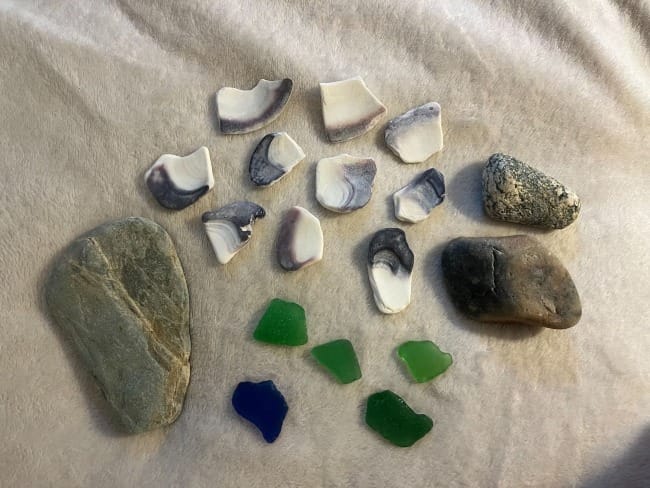
- Getting inspired by the natural world! I love using rocks, shells, and other found items for art pieces.
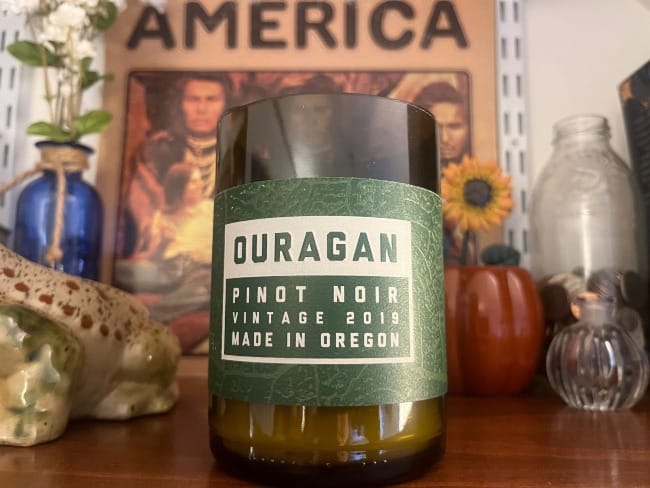
- Rescuing empty containers to be painted, sculpted around, or reused. Here’s an old bottle of wine that a friend of mine turned into a candle holder for me as a Christmas gift last year!
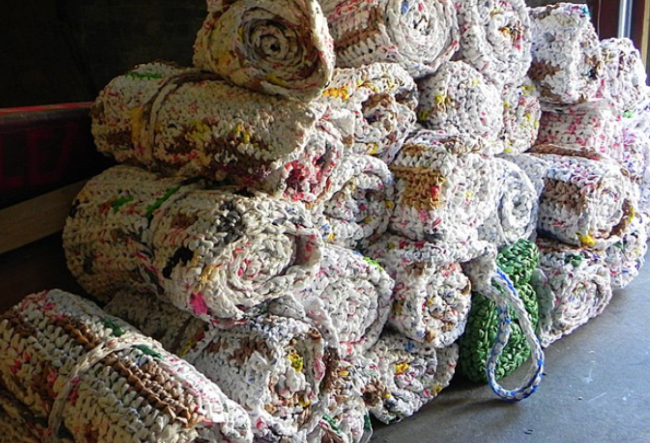
- Turning plastic grocery bags into “yarn” you can use to crochet or knit fun projects with. Bonus points if you come up with something as awesome as this idea of creating sleeping mats to be donated to charity!
- You can also create your own yarn out of t-shirts as shown here!
Whether it’s toilet paper rolls, plastic packaging, or your old middle school band t-shirts, chances are you’ve got craft supplies all around you - just get creative! Of course, we can’t always find just what we need collecting dust in a closet. So let’s check out some sustainable purchase options for your art!
When You Need To Buy Art Supplies
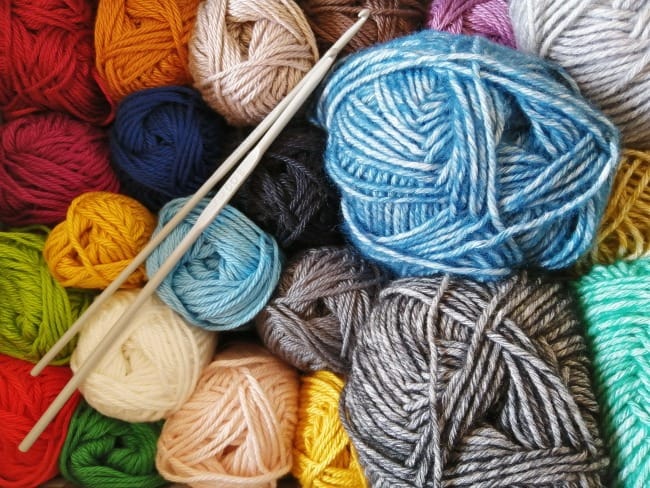
First up, I’ve been loving secondhand craft supply shops recently. I just graduated from college in Ann Arbor, Michigan, which has a great place called SCRAP Creative Reuse that collects clean, reusable craft materials and gives them new life. Stores like these are popping up all over the place - check out if there’s one near you! Even classic thrift shops like Goodwill have great options for fabrics, glassware, decor, and more.
If you can’t find what you’re looking for secondhand, you might be tempted to grab what you need from Amazon or a chain craft store. Don’t feel guilty - no one is a perfectly ethical consumer. I’ll be the first to admit that stores like Michaels or JOANN are my weakness! But many common art supplies have serious environmental impacts. Acrylic paint contains microplastics that can easily end up in our water sources when we wash paint brushes out in the sink. Synthetic paint brushes can take over 450 years to decompose, and their plastic handles even longer. In fact, any type of plastic included in an art supply can take hundreds of years to fully decompose. Additionally, many sources of paper and wood use enormous amounts of water and energy, as well as creating waste and contributing to deforestation.
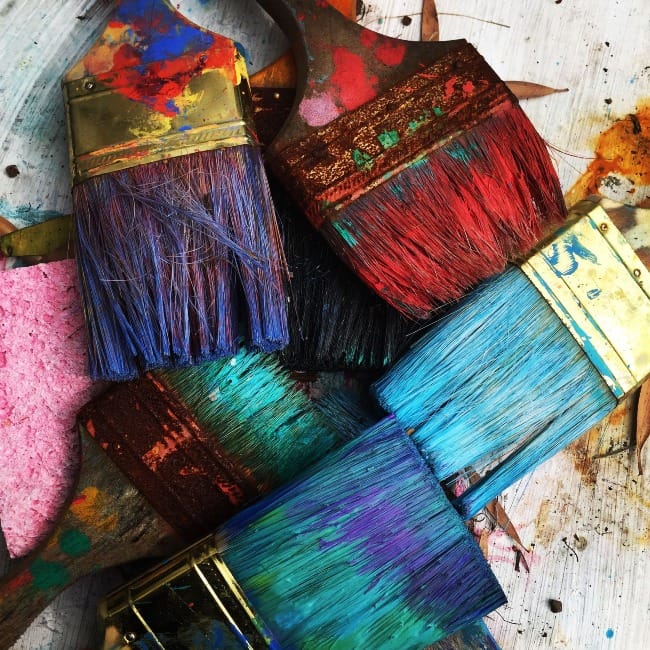
We can’t eliminate all of these issues just by making smart purchases - but every bit helps. If you’re looking to make a few eco-friendly swaps in your art world, there are a lot of awesome options to explore. As a general guide, here are some qualities to look for when purchasing supplies:
- Biodegradable - choosing compostable, recyclable, or biodegradable options helps minimize waste.
- Non toxic - make sure your supplies are safe for you and the environment!
- Natural ingredients - items like these plant based crayons or Natural Earth Paint are made with organic ingredients.
- Forest Stewardship Council certified - when purchasing products that come from trees, FSC certification ensures a product comes from a responsibly managed forest.
Making just a few easy, affordable swaps in your process of creating art can make a difference. There’s an abundance of resources on the Internet about eco-conscious products - I spent a while checking out existing research and encourage you to do the same! Let me know what kind of swaps you’ve already made or are planning to try.
(And if you’re looking for some extra credit, check out how to safely dispose of your existing supplies! It’s a commitment, but I found this source on paint water super interesting!)
Happy creating!

Colleen Megerle
Get in touch with Colleen via email.